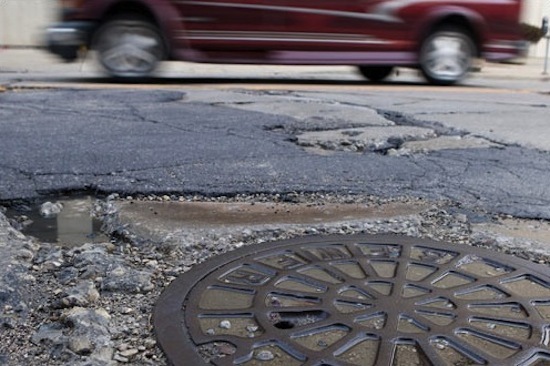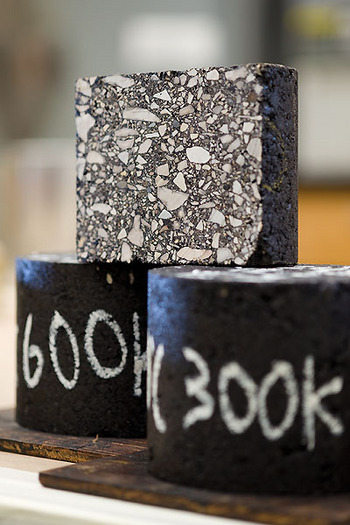UW center teams up with five states to address asphalt issues

UW-Madison’s Modified Asphalt Research Center is partnering with the Wisconsin Department of Transportation and four other states to revise the durability standards that asphalt has to meet before it goes on roads.
Photo: The Daily Reporter
More than 80 percent of major roads in the United States are still surfaced with asphaltic mixtures — and the liquid asphalt, a byproduct of oil refining, remains a bit of a chemical mess, an inconsistent, complex mix of hydrocarbons. So to understand how different kinds of asphalt will hold up under the weight of vehicles and the punishment of the elements, road engineers must use physical methods, from ovens to hydraulic testing devices, to inflict stress and extreme temperatures upon the mixtures.
Hussain Bahia, a professor of civil and environmental engineering, and his team at UW–Madison’s Modified Asphalt Research Center, or MARC, possess more of that kind of gear than almost any other place in the country. As a result, they are partnering with the Wisconsin Department of Transportation, or WisDOT, and four other states to revise the durability standards that asphalt has to meet before it goes on our roads.

Hussain Bahia
The asphalt standards different states use end up having a big impact on both road quality and the cost of maintaining and building roads. The project’s end goal is to create a common set of standards that multiple states — for now, Wisconsin, Idaho, Ohio, Colorado and Kansas — can use for testing asphalt’s durability.
Bahia says this will streamline the process of making asphalt right where it starts, at the petroleum refineries of which asphalt is a byproduct. “If I own the refinery and terminal and I have six different specifications to meet, I have to have six storage tanks,” he says. “It will cost me much more money to produce, and I will pass the costs on.”
And for states whose roads face many of the same problems, especially from harsh weather, that makes little sense.
The efficiencies could eventually spread beyond the states currently participating in this project. “There are a lot of northern climate states, and whatever we come up with, it’s important for us to be testing and thinking on the same page,” says Barry Paye, the materials lab supervisor at WisDOT, who earned his bachelor’s and master’s in civil and environmental engineering from UW–Madison.

A crosscut section of asphalt revealing the aggregate and petroleum-based binder mix at the Modified Asphalt Research Center.
Even when multiple states form a purchasing group to streamline the administrative side of buying asphalt, those member states often will have different standards, Paye says. So Paye’s hope is that the states in the research project can attain consistent results and common specifications, then work as a group to save money and maintain more resilient roads.
Asphalt engineers still don’t know everything about making roads that hold up under the abuse of cold weather, ice and snow. So in northern states, road surfaces often don’t last as long as they are intended to, which drives up states’ costs even more.
“Our main problem is what’s called thermal cracks,” Bahia says. “If you drive around, you will see most of our roads in Madison have almost horizontal cracks from one edge of the road to the other, and spaced every 30 to 60 feet. This is an effect of the climate conditions we have. To create a specification to minimize that damage is really the starting point.”
Judie Ryan, another WisDOT asphalt expert involved with the project, credits Bahia and MARC with using an unmatched wealth of asphalt expertise and testing equipment for the broader benefit of transportation agencies around the country. “MARC helps WisDOT think about the future,” Ryan says.
Tags: campus transportation, engineering, research




